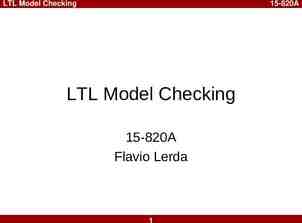Pre-reading about Patient Controlled Analgesia (PCA) for
29 Slides886.50 KB
Pre-reading about Patient Controlled Analgesia (PCA) for Children Royal Children’s Hospital Melbourne Australia
What is Patient Controlled Analgesia? Patient Controlled Analgesia (PCA) uses a programmable syringe pump to allow patients to self-administer their own intravenous analgesia PCA was first described in 1968 In the late 1980’s improvements in syringe pump technology allowed PCA to become available for general use Childrens Pain Management Service, RCH, Melbourne
The PCA pump used at RCH: Alaris PCA pump P5000 Childrens Pain Management Service, RCH, Melbourne
Advantages of PCA Patients can titrate their analgesia to their pain Patients are in “control” Rapid response to demand for analgesia Reduced patient anxiety compared with other analgesia techniques Childrens Pain Management Service, RCH, Melbourne
Advantages of PCA Fewer complications when opioids are administered this way Excellent analgesia for the majority of patients Increased staff, patient and family satisfaction Decreased staff workload Childrens Pain Management Service, RCH, Melbourne
Safety Factors PCA is safer than IM or IV opioid boluses Its safety depends on several factors: The patient should be the only person to use the handset/button The PCA should be set up and supervised by experienced staff The PCA program should be standardised according to a fixed protocol to eliminate error At RCH only Anaesthesia staff, Recovery room nurses and members of the Children’s Pain Management Service may program PCA’s Childrens Pain Management Service, RCH, Melbourne
Understanding PCA The PCA device is a programmable syringe pump, which delivers the opioid infusions according to individualised settings: Bolus dose Lockout time Dose duration Background infusion Childrens Pain Management Service, RCH, Melbourne
Bolus dose When the patient presses the remote button, the PCA delivers the programmed bolus dose In cases of severe pain or in patients with large opioid requirements the bolus dose may be several times higher than the usual protocol Childrens Pain Management Service, RCH, Melbourne
Lockout time Lockout time is usually set at 5 minutes The PCA will not deliver a dose during lockout time, even if the patient presses the button This allows each bolus to reach peak effect before the patient has another bolus Lockout time reduces the risk of overdose Childrens Pain Management Service, RCH, Melbourne
Good tries / Bad tries A good try is when the PCA delivers a bolus dose of analgesia A bad try is when the patient presses the button during the lockout time and no bolus dose is delivered Knowing the proportion of good and bad tries allows CPMS to adjust the PCA settings to meet the patient’s needs or whether further patient education is required Childrens Pain Management Service, RCH, Melbourne
Dose duration Dose duration is normally set as ‘stat’ Alaris PCA ‘stat’ is 70 seconds The dose duration may be increased to prevent problems such as lightheadedness or nausea associated with a rapid peak of onset of analgesia Childrens Pain Management Service, RCH, Melbourne
Background infusion Background infusion (continuous infusion) may be added to improve analgesia Generally background infusion is only required for patients following major surgery or patients with oncology-related pain and high opioid requirements Background infusions may increase the risk of the side effects associated with opioids: sedation, respiratory depression, itch, nausea Childrens Pain Management Service, RCH, Melbourne
Patient selection PCA is suitable for treatment of most types of acute and acute-on-chronic pain: Surgical Medical Trauma Burns Oncology Childrens Pain Management Service, RCH, Melbourne
Contraindications to PCA Inability to understand the concept of PCA Children not wishing to control their own analgesia Childrens Pain Management Service, RCH, Melbourne
What aged child can use PCA? The child needs to understand the concept of pressing a button to selfadminister analgesia when required Most children of normal intellect over 7 years can use PCA Some younger children can manage PCA Childrens Pain Management Service, RCH, Melbourne
Alaris PCA handset The Alaris handset is an electronic switch The button is lit at all times Childrens Pain Management Service, RCH, Melbourne
Hand function Lack of normal hand function does not mean children cannot use PCA There are a number of alternate handsets and an oral set available Childrens Pain Management Service, RCH, Melbourne
Alternate PCA handsets This handset is for patients with a weak handgrip A velcro loop holds the handset in the palm The white button is pressed to trigger the PCA Childrens Pain Management Service, RCH, Melbourne
Alternate PCA handsets This handset is for patients with a very weak handgrip or no use of their hands It is very easy to press so careful patient selection is important Forearms, feet or knees can be used to trigger the PCA An electronic conversion box is needed to activate the air pump Childrens Pain Management Service, RCH, Melbourne
This child with two injured arms was able to use an alternate PCA handset with his fingertips Childrens Pain Management Service, RCH, Melbourne
Oral PCA switch In rare situations the patient is unable to use any body part to trigger the PCA Using a mouthpiece it is possible for a PCA to be triggered by a breath from the patient Childrens Pain Management Service, RCH, Melbourne
Caring for children using PCA Correct dose of opioid Correct programming of PCA pump Accurate documentation Observation of vital signs Documented pain scores Adequate analgesia achieved Childrens Pain Management Service, RCH, Melbourne
Caring for children using PCA Monitoring: sedation scores respiratory effort, rate, depth oxygen saturation heart rate The number of good and bad tries are documented The total dose of opioid received is also recorded Childrens Pain Management Service, RCH, Melbourne
Pre-operative education The anaesthetist will discuss PCA with the parents and child pre-operatively It is helpful if nurses also explain the basic principles of PCA to the child prior to surgery Many children need further reminding post-operatively about using PCA effectively A fact sheet is available for families Childrens Pain Management Service, RCH, Melbourne
What to tell children about PCA The nurse teaching the child and their family about using PCA should cover the following topics: how the PCA pump works when to push the button how the PCA helps the child get the right amount of pain relief medicine how the PCA stops the child getting too much pain relief medicine Childrens Pain Management Service, RCH, Melbourne
What to tell children about PCA Children should not be told to expect complete pain relief but instead to use the PCA to reduce pain to a level where they feel comfortable If the child is experiencing problems with using the PCA, notify the Children’s Pain Management Service for review Childrens Pain Management Service, RCH, Melbourne
Pre-emptive analgesia The PCA device can be used in a preemptive manner to reduce pain from physiotherapy, dressing changes, turning and ambulation Children should be reminded to use their PCA once or twice before the painful event occurs It is helpful that staff remember to give the child enough time so the analgesia peaks prior to the painful event Childrens Pain Management Service, RCH, Melbourne
Children's Pain Management Service The Children's Pain Management Service supervises all patients with PCA at Royal Children's Hospital CPMS can be contacted at all times on pager 5773 Childrens Pain Management Service, RCH, Melbourne
Finally Optimal pain management is the right of all patients and the responsibility of all health professionals Childrens Pain Management Service, RCH, Melbourne







